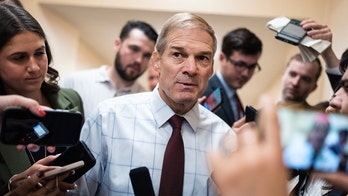Boeing's Starliner spacecraft has successfully landed on Earth after a six-hour journey from the International Space Station. The spacecraft parachuted into New Mexico's White Sands Missile Range at 12:01 a.m. ET, marking the culmination of a test flight that was plagued by setbacks.
Boeing's Starliner spacecraft has successfully completed its uncrewed test flight, landing safely on Earth six hours after departing the International Space Station (ISS). The spacecraft touched down in New Mexico's White Sands Missile Range at 12:01 a.m. ET, marking a significant milestone in the development of Boeing's commercial crew transport system.
The Starliner's return to Earth comes after months of delays and setbacks, including thruster failures and helium leaks. The spacecraft was initially scheduled to carry two test pilots, Butch Wilmore and Suni Williams, back to Earth in mid-June, but NASA ultimately decided it was too risky to bring them home on Starliner. Instead, SpaceX was tapped to fly Wilmore and Williams back to Earth, with their return scheduled for the end of this month.

Boeing Starliner Returns to Earth Uncrewed
Despite the setbacks, Boeing claimed that Starliner was safe to bring the crew home after conducting extensive testing. However, NASA remained skeptical and ultimately tasked SpaceX with the astronauts' return.
After receiving new software updates, the fully automated Starliner departed from the ISS with the crew's blue spacesuits and some old station equipment. Flight controllers conducted more test firings of the capsule's thrusters after undocking, with one failing to ignite. Engineers believe the thrusters become hotter the more they are fired, causing protective seals to swell and obstruct the flow of propellant.

Boeing Starliner Returns to Earth Uncrewed
Despite the thruster failure, Starliner's return to Earth was largely successful. The spacecraft's parachutes deployed as planned, and the capsule landed softly in the White Sands Missile Range.
"I am extremely proud of the work our collective team put into this entire flight test, and we are pleased to see Starliner's safe return," said Ken Bowersox, associate administrator of Space Operations Mission Directorate at NASA Headquarters in Washington. "Even though it was necessary to return the spacecraft uncrewed, NASA and Boeing learned an incredible amount about Starliner in the most extreme environment possible. NASA looks forward to our continued work with the Boeing team to proceed toward certification of Starliner for crew rotation missions to the space station."

Boeing Starliner Returns to Earth Uncrewed
The Starliner's return to Earth marks a significant step forward for Boeing and NASA. The spacecraft will now be moved back to NASA's Kennedy Space Center for further analysis and testing. Boeing and NASA will work together to determine the next steps for the program and address the remaining issues before Starliner can be certified for regular astronaut transport to the ISS.
SpaceX's crew ferry flight later this month will be the 10th it has done for NASA since 2020. The Dragon capsule will launch on the half-year expedition with only two astronauts, since two seats are needed to bring Wilmore and Williams back home.

Boeing Starliner Returns to Earth Uncrewed
NASA's commercial crew program manager Steve Stich said earlier this week that the space agency still wants to have two competing U.S. companies transporting astronauts into space. NASA hopes SpaceX and Boeing can take turns launching crews until the space station is abandoned in 2030 ahead of its fiery reentry.
"We are excited to have Starliner home safely. This was an important test flight for NASA in setting us up for future missions on the Starliner system," said Steve Stich, manager of NASA's Commercial Crew Program, in a statement after Starliner returned to Earth. "There was a lot of valuable learning that will enable our long-term success. I want to commend the entire team for their hard work and dedication over the past three months."










